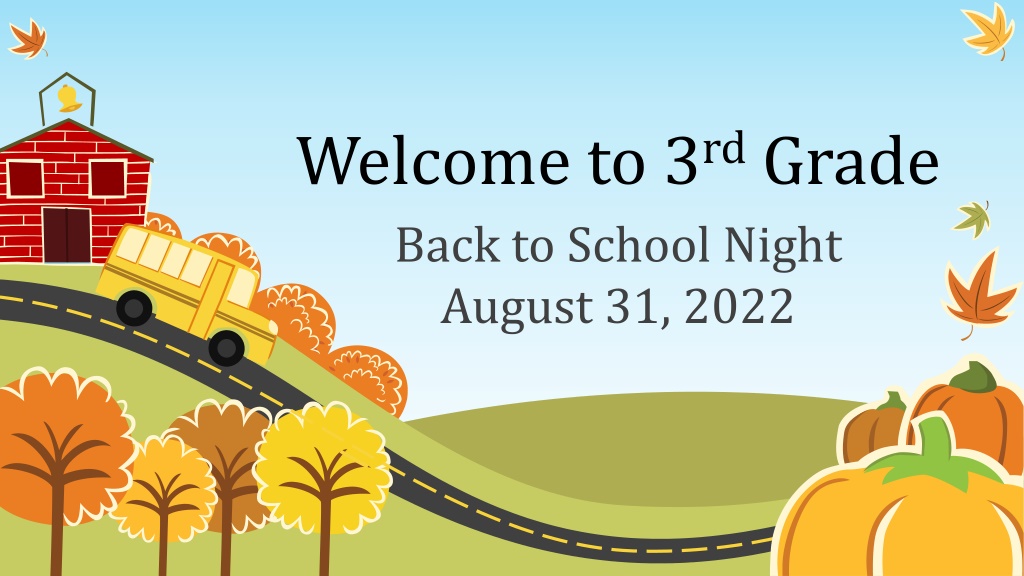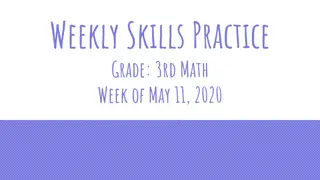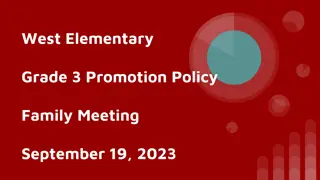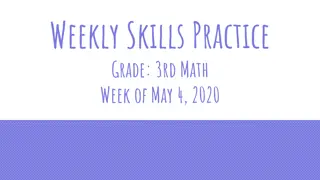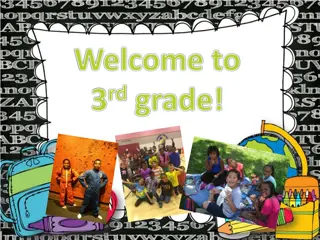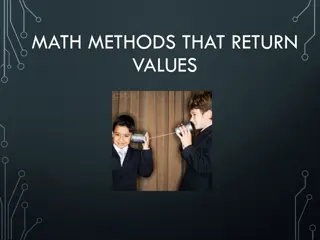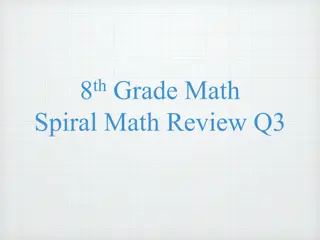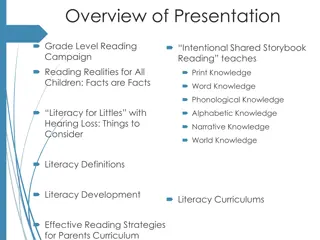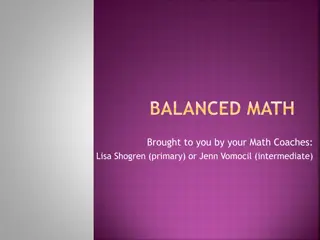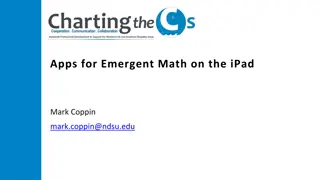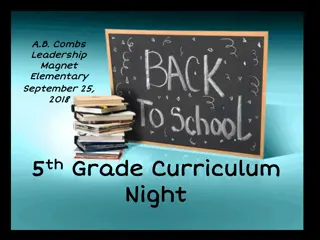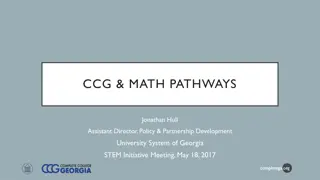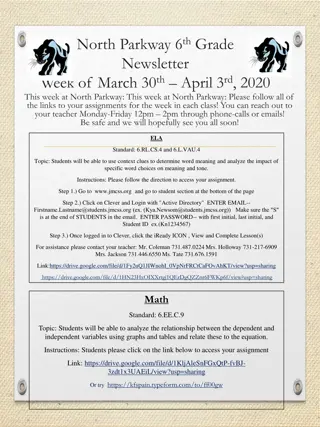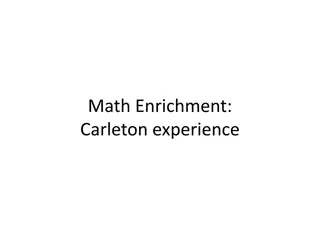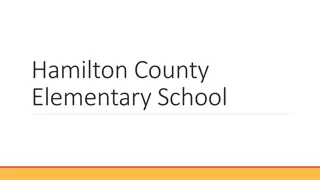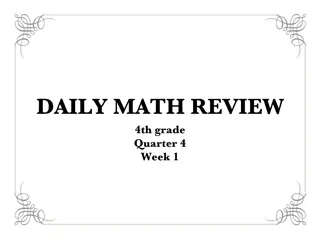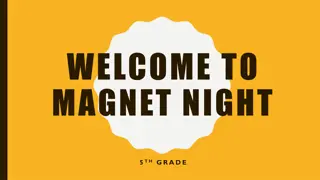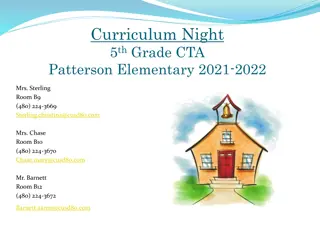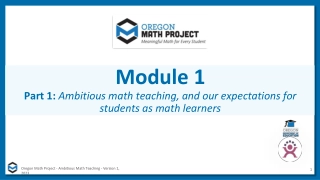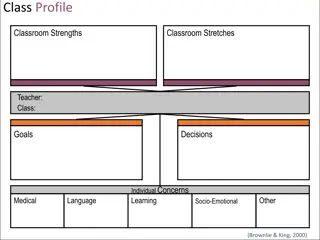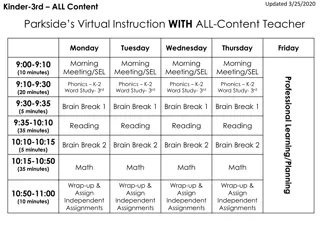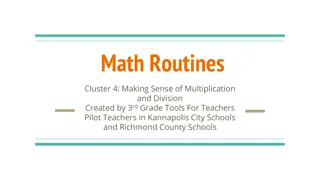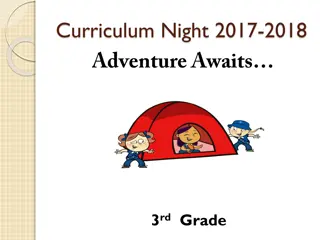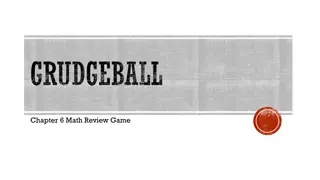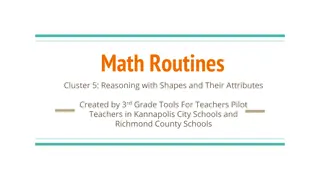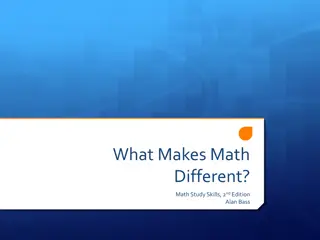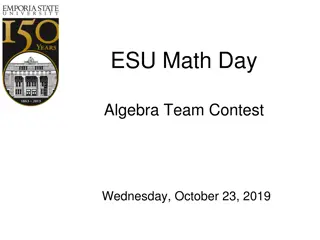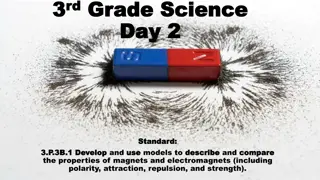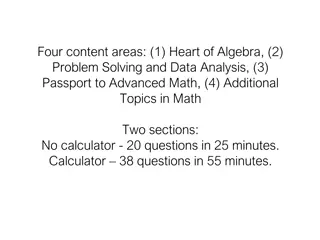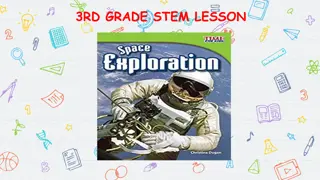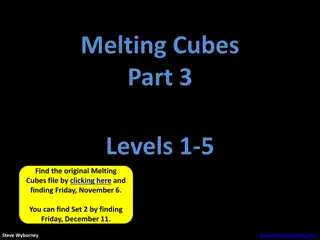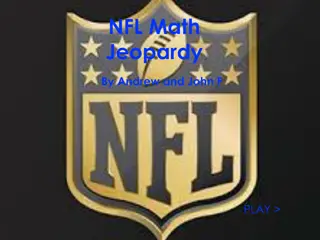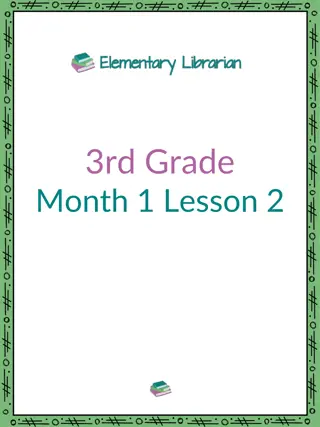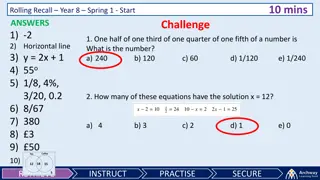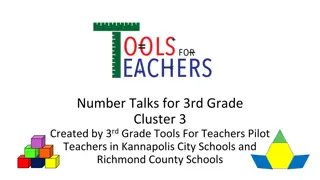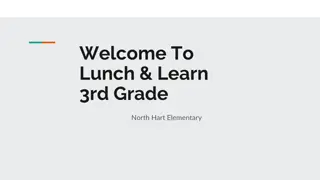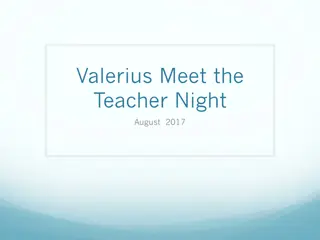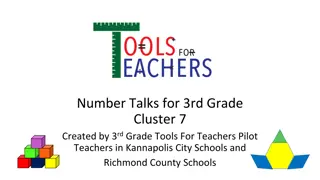Exciting Insights into 3rd Grade Math Curriculum and Practices
Explore the engaging 3rd Grade Math curriculum and teaching practices, including units based on Common Core Standards, mathematical fluency objectives, and classroom approach to problem-solving and reasoning. Get a comprehensive overview of the daily schedule, teacher team, and K-12 Standards for Mathematical Practices being implemented for a dynamic learning experience.
Download Presentation

Please find below an Image/Link to download the presentation.
The content on the website is provided AS IS for your information and personal use only. It may not be sold, licensed, or shared on other websites without obtaining consent from the author. Download presentation by click this link. If you encounter any issues during the download, it is possible that the publisher has removed the file from their server.
E N D
Presentation Transcript
Welcome to 3rdGrade Back to School Night August 31, 2022
The Third Grade Team STEM Mr. Koontz, Mrs. Inge Humanities Mrs. Alexander, Ms. Spencer STEM/Humanities Mrs. Zarrelli Our Daily Schedule 8:05-8:35 Arrival 8:35-10:35 Academic Block One Morning Class 10:35 11:35 Specials 11:35 11:45 Academic Block One 11:45 12:30 Academic Block Two Afternoon Class 12:30-1:00 Lunch 1:00-1:30 Recess 1:30-3:00 Academic Block Two Afternoon Class 3:05 Dismissal
3rd Grade Math
3rd Grade Math Units Based on the Common Core Standards Quarter 1 * Foundations of Multiplication, Division and Area *Strategies for Addition, Subtraction and Measurement Quarter 2 *Equal Partitioning and Naming Fractions *Multiplication and Division Quarter 3 *Equivalence and Comparing Fractions /Measurement and Data *Multiplication, Division and Area Quarter 4 *Geometry and Measurement *Demonstrate Computational Fluency
K-12 Standards for Mathematical Practices 1. Make Sense of problems and persevere in solving them. 2. Reason abstractly and quantitatively . 3. Construct viable arguments and critique the reasoning of others. 4. Model with Mathematics 5. Use appropriate tools strategically 6. Attend to precision 7. Look for and make use of structure 8. Look for and express regularity in repeated reasoning
Third Grade Fact Fluency 3.OA.7 As students show mastery of a set of multiplication and division facts, they should progress to the next set in order to know from memory all products of two one-digit numbers by the end of Grade 3. Multiplication and Division Facts Foundation Facts x 2, x 10, x 5, x 1, x 0 2, 10, 5, 1, 0 Set Number Possible Strategies Skip counting Doubling Base ten (10 s) Properties Multiply by two and then add another group (3 s) Double double (4 s) Double a multiple of 3 (6 s) Multiply by 5 and then add another set (6 s) Double double double (8 s) Multiply by 10 and then take away the extra group (9 s) Commutative property (leaves only 7 x7 to learn) 1 Foundation Facts 2 AND x 3, x 4, x 6 3, 4, 6 Foundation Facts, x 3, x 4, x 6, 3, 4, 6 3 AND x 9, x 8, x 7 9, 8, 7
What does Math look like in our classrooms? *Use of Math Practices *Problem Solving including 2-3 step problems *Productive Struggle *Number Talks *Justify your thinking and explaining to your classmates, showing your thinking *Fact strategies, practice and games *A progression of learning, each cluster builds on the previous one *Application of math skills and practices to daily life
What can you do to help your child in Math? Encourage reasoning skills by asking questions like: *Reinforce daily fact practice (+, -, x, ) (5 mins) **How do you know your answer is correct? *Share and involve your child in daily use of Math (cooking, traveling, shopping, allowance, telling time, etc.) **Show and explain to me how you solved the problem. *Utilize the Carroll County Website for resources Let your child know that real learning comes with struggle and experience.
STEM Units (Science, Technology, Engineering, Math) *Inheritance and Variation of Traits *Weather and Climate *Forces and Interactions *Matter and Interactions
Reading Instruction is designed to foster higher- level thinking and reading strategies using both literary and informational text. Students meet as a whole class and guided reading groups. We will be studying realistic fiction, poetry, historical fiction, non- fiction, mysteries, biographies, and fantasies throughout the year.
https://www.mheonline.com/assets/images/cover/large/0021190658.jpghttps://www.mheonline.com/assets/images/cover/large/0021190658.jpg
What can you do to help your child read and write? *Read to and with your child everyday. *Visit the library regularly to allow choice of a variety of age- appropriate books, magazines and newspapers *Provide real life writing opportunities (letters to friends or relatives, thank you notes, scrapbooks and journals.) *Spend time talking with and listening to your child tell about daily experiences. These could be written into a journal or scrapbook. *Let your child catch you reading and writing.
Writing We write for three purposes: 1. Narrative writing about a real or imagined experience. 2. Opinion including facts and details in a reasoned, logical argument. 3. Informative -writing to inform someone about a topic. ***Writing will occur across all content areas and fine arts / fitness.*** Students will write for a variety of purposes including short focused projects and longer tasks requiring research involving comparison texts or articles.
Humanities Vocabulary Comes from Wonders Anthology, and Social Studies Words are introduced throughout our units, assessed for meaning Daily in class activities and occasional homework is given to review Fundations / Spelling Focuses on spelling patterns, assessed periodically Focuses on accurate use in writing Words will focus on the six spelling patterns and exceptions Daily instruction and occasional homework to review word patterns Grammar Mini lessons incorporated into writing instruction
Social Studies Integrated topics within Reading and Writing Carroll County Regions of the United States Economics We will be using our Social Studies Anthology, Social Studies Alive
PBIS in 3rd Grade Positive Behavior Incentive System A school-wide behavior system focusing on positive behaviors LSE Standards S Safety T Taking responsibility A - Active learning R - Respect
Steps for reinforcing positive behaviors/choices Verbal warning Reflection Sheets Referral Starbucks will be given to students that are observed following the STAR Standards Students will work towards both individual rewards and whole class/grade rewards
Linton Springs Stop and Think Reflection Sheet Name: _____________________ Date:__________ Which school rule did you break? Safety Responsibility Active Learning Respect Why did you break the rule? Didn t want to work wanted attention Not listening Upset with someone Other:__________ How were you feeling? angry silly sad confused Briefly tell what happened. I was supposed to be ___________________. But, I was ________________________________. Next time I will _______________________.
So You Know. . . Homework *Your child can expect reading and math homework on most days. Agenda Books *Parent/Guardian signs Agenda, and returns it daily *Use this for daily communication *Absence / Early dismissal notes can no longer be written in the Agenda book, they should be on a separate piece of paper, emailed lseattendance@carrollk12.org or faxed into the school office Allowed in School *Hand Sanitizer *Non-medicated Chapstick *Non-medicated cough drops Volunteers *Check the school website about online volunteer training *You must be volunteer trained to chaperone field trips at least one full week prior to the trip *We will be sending home information about volunteer opportunities Field Trip Ideas *Social Studies and Science
Math On or above Fact fluency County benchmark tests
ELA Third Grade On Grade Level WINTER Quarter 2 SPRING Quarter 4 Quarter 1 Quarter 3 Reading Level Scholastic Reading Inventory O+ --- --- --- 454+ 483+ --- 572+ Comprehension Benchmark Assessment -- 80% -- 80% County Writing Expectations 80% 80% 80% 80%
Home Access Center through the Carroll County Public Schools Website: https://www.carrollk12.org
Please feel free to contact us with any questions or concerns. * Sharon Inge skinge@carrollk12.org * Brandon Koontz brkoon2@carrollk12.org * Shannon Spencer- smspenc@carrollk12.org * Becca Zarrelli rezarre@carrollk12.org * Christine Alexander cmalex2@carrollk12.org
Thank you for attending our Back to School Night, we appreciate the time and energy that you invest in your children. unknown
